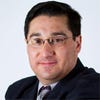A family doctor with a six-physician center in Ohio recommends building spreadsheets to track progress and ease the attestation process.


17 Leading EHR Vendors
(click image for larger view)
Slideshow: 17 Leading EHR Vendors
As promised, the federal Centers for Medicare and Medicaid Services did begin issuing payments to Medicare providers who have achieved "meaningful use" of electronic health records.
"Our money hit the bank on the 18th," said Dr. Peter Muir, a family physician in Springfield, Ohio. Muir was one of four doctors at the six-physician Springfield Center for Family Medicine to receive the maximum 2011 Medicare bonus of $18,000 each. The other two will see similar bonuses soon, according to Muir, so the practice will earn an extra $108,000 for 2011.
"All six of our docs have met meaningful use," Muir said. Two haven't yet billed Medicare for at least $24,000 in services this year, which is the minimum activity level for CMS to pay out EHR subsidies.
Physicians and other individual "eligible providers" may earn as much as $44,000 in extra Medicare payments over a five-year period for meaningful use of EHR technology that has been certified to meet federal functionality standards as part of a $27 billion health IT incentive program. Alternatively, providers with at least 30% of their patients on Medicaid (20% for pediatrics) may choose to participate in a similar program through Medicaid with bonuses as high as $63,750 per provider.
Providers must demonstrate meaningful use for 90 consecutive days during their first year of participation in the program as long as they begin by 2014. In subsequent years, meaningful use must be continuous. Each year, they apply for the federal funding through a CMS online attestation system that opened last month.
Attestation took about 45 minutes per doctor. "The attestation, I thought it would be more cumbersome than it was," Muir said. "The more doctors you do, you get a little faster."
It also helped that the practice was prepared. For one thing, Springfield Center for Family Medicine's journey toward meaningful use goes back to 2003, when the practice first installed an EHR from NextGen Healthcare Information Systems, a Horsham, Pa.-based subsidiary of Quality Systems. Early this year, the practice upgraded to a version that was certified for 2011 meaningful use.
After CMS published the current rules for meaningful use--the first of three planned stages--Muir went online and printed out the list of criteria. He sat down with the practice's billing manager, who built a spreadsheet to track each physician's progress toward each required and optional measure.
Muir and his partners chose to start their compliance with the toughest measures to achieve so they weren't scrambling later after knocking off the easier parts. They also turned to NextGen and to the Tri-State Regional Extension Center, a federally funded resource to help small practices in southwestern Ohio, northeastern Kentucky, and south-central Indiana achieve meaningful use. (Muir himself volunteers with the regional extension center once a week to assist other practices with compliance.)
Having all the information organized helped speed up the attestation process, but populating the spreadsheet required some changes. "We needed to modify some workflows to capture that information," Muir said. For example, Muir long has counseled patients about smoking cessation, but until the federal EHR incentive program came along, he didn't always indicate in the record that he had provided such counseling.
"This is not the same as PQRI," Muir said, referring to the Physician Quality Reporting Initiative, a Medicare pay-for-performance program that's now called the Physician Quality Reporting System. Meaningful use is much more comprehensive and the requirements are more specific.
To Muir, the 2011 bonuses represent a good start on the road to better, lower-cost care. "The way I look at it now is I have an eighth-grade diploma. I'm really looking to get a master's and a Ph.D.," Muir quipped.
He wants to be able to use the EHR for disease and population management, which later stages of meaningful use likely will require. Muir started a health information exchange called the Collaborating Communites Health Information Exchange so his practice could share data with a local hospital. The exchange has since connected with the much larger HealthBridge, a long-established HIE based in Cincinnati, but Springfield Center for Family Medicine still can't import structured data into the EHR from outside the practice.
That is coming, probably early next year. "The HIE piece I think is going to be really huge in the future," Muir said.
In the new, all-digital InformationWeek Healthcare: iPads are leading a new wave of devices into the exam room. Are security, tech support, and infection control up to the task? Download it now. (Free registration required.)
About the Author(s)
You May Also Like







